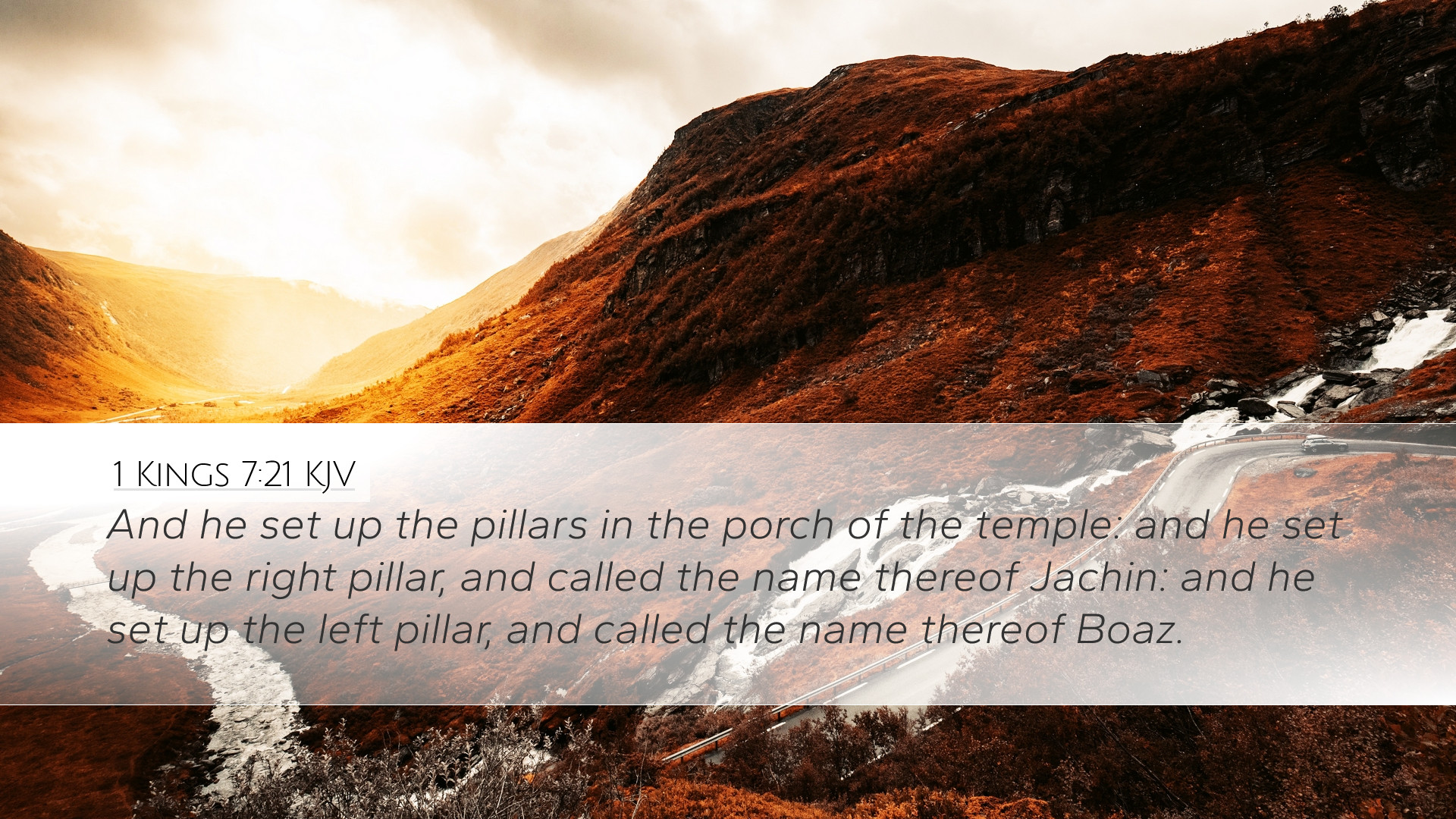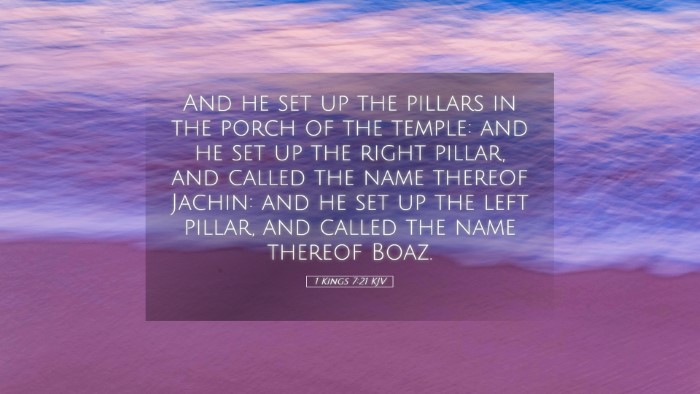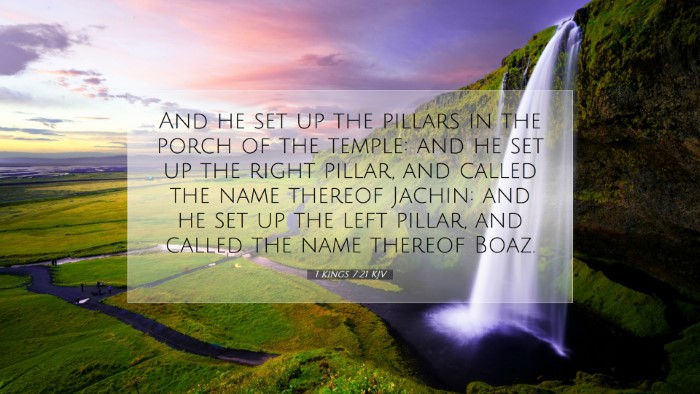Commentary on 1 Kings 7:21
Verse Context: 1 Kings 7:21 states, "And he set up the pillars in the porch of the temple: and he set up the right pillar, and called the name thereof Jachin: and he set up the left pillar, and called the name thereof Boaz." This verse describes a significant event in the construction of Solomon’s Temple, highlighting the symbolic and architectural importance of the pillars.
Symbolism of the Pillars
The two massive pillars known as Jachin and Boaz serve not only a structural purpose but also a profound symbolic significance. Matthew Henry notes that the names of the pillars reflect important theological truths: Jachin meaning "He will establish," and Boaz meaning "In Him is strength." These names suggest that divine strength and establishment are foundational to the worship and governance of Israel.
Theological Significance
- Divine Assurance: The name Jachin signifies God's promise to establish His people. This assurance is a core theme in the narrative of Israel and is echoed throughout the scriptures. God's establishment of His house (the temple) reflects His commitment to be with His people.
- Strength in God: Boaz represents strength, indicating that true strength is found in reliance upon God. Albert Barnes emphasizes that the church's strength and stability come from God alone, which is essential for the believers in their faith journey.
Architectural Context
From an architectural perspective, the pillars were part of the grand design of Solomon's temple, showing a blend of beauty and strength. Adam Clarke elaborates on how these pillars were not only decorative but also supported the entrance of the temple, symbolizing that both beauty and strength are essential for a functioning worship space. The grandeur of the temple was meant to reflect the glory of God and attract both Israelites and gentiles to the worship of the true God.
Architectural Characteristics
- Dimensions and Design: Scholars suggest that the height of the pillars was about 18 cubits, with intricate designs including chapiters (the tops of the pillars) adorned with lily patterns and pomegranates. Such details highlight the creativity infused in the worship of Yahweh.
- Symbolic Entrance: The placement of the pillars at the porch of the temple serves as a threshold, marking the entry to the holy space. They symbolize the transition from the secular to the sacred, emphasizing the importance of preparing one's heart before entering into worship.
Implications for Worship Today
The insight gained from this passage has lasting implications for contemporary worship settings. Just as the pillars set the tone for Solomon's temple, modern places of worship must reflect the strength and stability found in God. Pastors and church leaders can draw on the symbolism of Jachin and Boaz to remind congregants that God not only establishes His church but also upholds it in strength.
Lessons for Today’s Church
- Establishment in Faith: Churches must emphasize teaching that God is the ultimate authority and source of stability. Leaders should continually direct their congregation’s focus towards God’s faithfulness as a means of encouragement.
- Strength in Community: Just as the pillars support the structure, the church community should function in mutual support, strengthening one another in faith and service.
Conclusion
In examining 1 Kings 7:21, both the architectural and theological aspects yield rich insights into the nature of God's relationship with His people. The pillars Jachin and Boaz remind believers today of God's promises to establish and strengthen His church. Those engaged in pastoral ministry, academic exploration, or personal study can find in this text a profound source of inspiration for their roles in the body of Christ.


